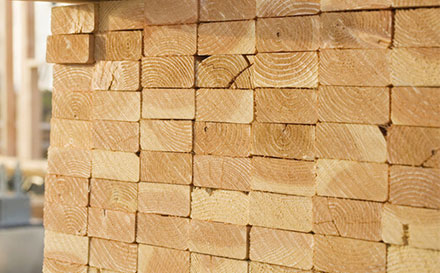The decision made by Carter Holt Harvey (CHH) to discontinue supply of structural timber to some merchants comes as no surprise says the New Zealand Timber Industry Federation (NZTIF). In recent months all New Zealand sawmills have been under pressure to supply a booming domestic timber market for all end uses; residential building and outdoor timber for uses including fencing decking and landscaping. Source: Timberbiz
However, based on other available timber milling production capacity and previous cyclical shortages, the New Zealand Timber Industry Federation doesn’t expect the current timber shortage to be overly prolonged.
Efforts are being made to supply the demand in some cases mills are diverting export timber back into the New Zealand market. However, sawmills’ ability to ramp up production quickly has been constrained in regions by a lack of availability and rising costs of logs and labour.
Apart from the two remaining CHH sawmills, there are still a good number of other mills operating and all are lifting capacity as much as they are able to meet this current increase in demand.
The biggest challenge to lifting production for mills is getting enough logs and in turn, competing on supply and price with the Chinese buyers and the export demand for NZ logs.
The next challenge then is getting enough skilled staff to put on additional shifts. Getting the mix of skills required, or training staff, has been an ongoing issue to the timber industry for a number of years.
Users of timber need to avoid panic buying, plan well ahead and consider using other timber sizes, grades and specifications that may be more available.
Councils and building consenting authorities should in turn be going out of their way and putting provisions in place to remove compliance barriers and make it straight forward for builders to make any timber specification changes, deemed necessary, without undue hassles and delays. For instance, substituting sizes and grades and in many cases “brand name” such as where plans specify “Laser frame” a CHH product which could readily be substituted by a product from a different mill.
The government could assist by including the specialised skills, applicable to sawmilling, on the Essential Skills Shortage List so the immigrant labour could be utilised in the short term.
New Zealand sawmills have historically been able to supply all of the country’s timber needs with few shortages ever occurring or lasting for long.
Timber retailers and builders have, in the past, been spoilt with timely deliveries and choice of timber suppliers leading to few supply constraints and timber prices being held down.
The squeeze between rising log and labour costs and sawn timber sales prices has led to numerous sawmill closures over recent years. Some regions of NZ now have no, or few, sawmills making these communities more exposed to timber supply shortages.
Over the last two years alone, we have seen five significantly sized sawmills close down, representing an estimated 400,000 cubic meters of production. A major factor in these closures has been uncertainty and the high cost of log supply.
While the remaining sawmills have taken steps to plug the shortfall, lost capacity to service the local market is evident. In the February this year the value of log exports was NZ$305 million, a 48% increase on the values of logs exported in February 2020.
In the quarter to 31 December 2020 New Zealand exported 6.0 million tonnes of logs compared with 5.1 million tonnes in the December 2019 quarter, an 18% rise. There is unabated demand for logs in export markets, especially China where other log supplying regions, Australia, eastern Russia and Europe have encountered difficulties in supply.






